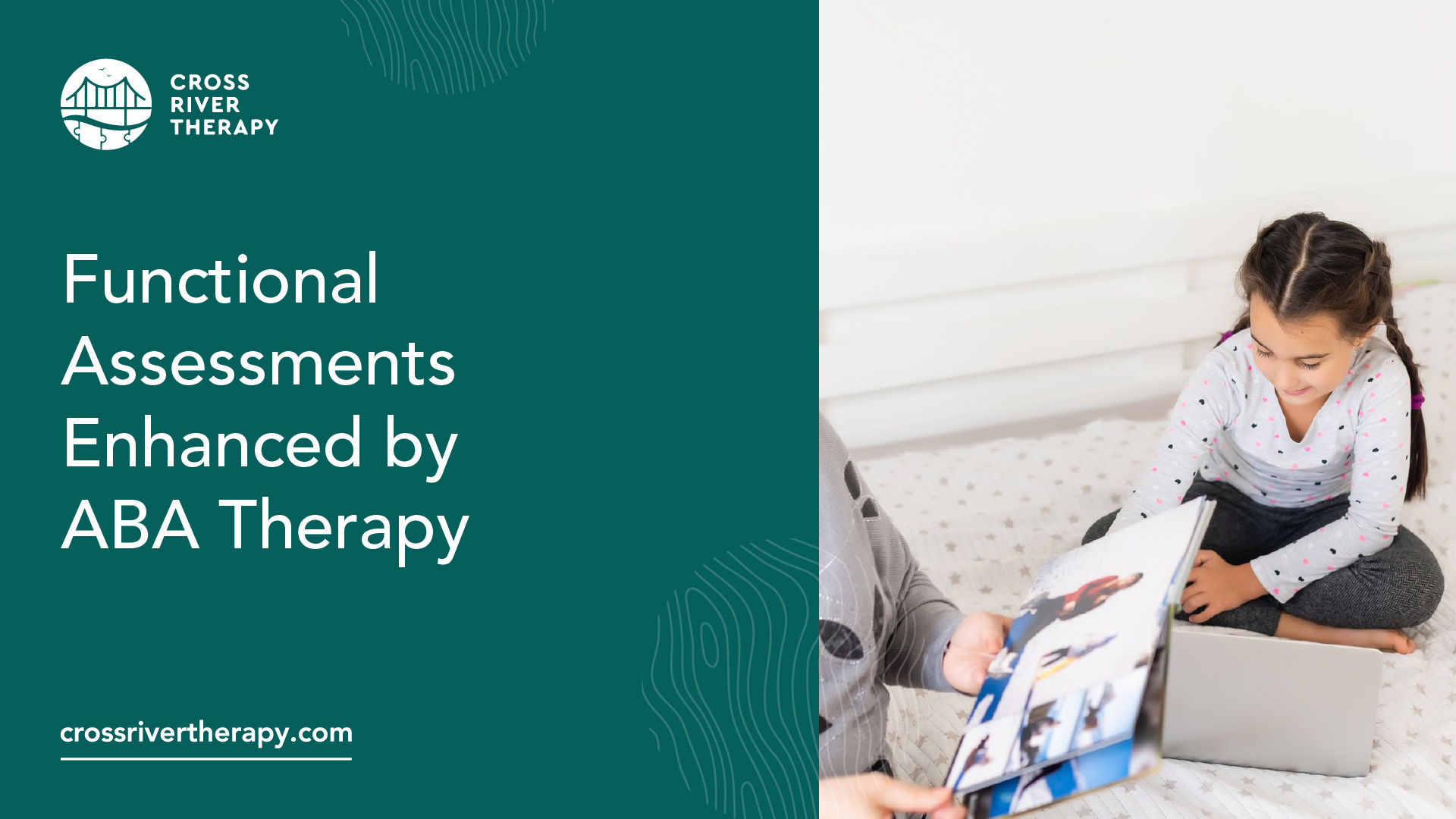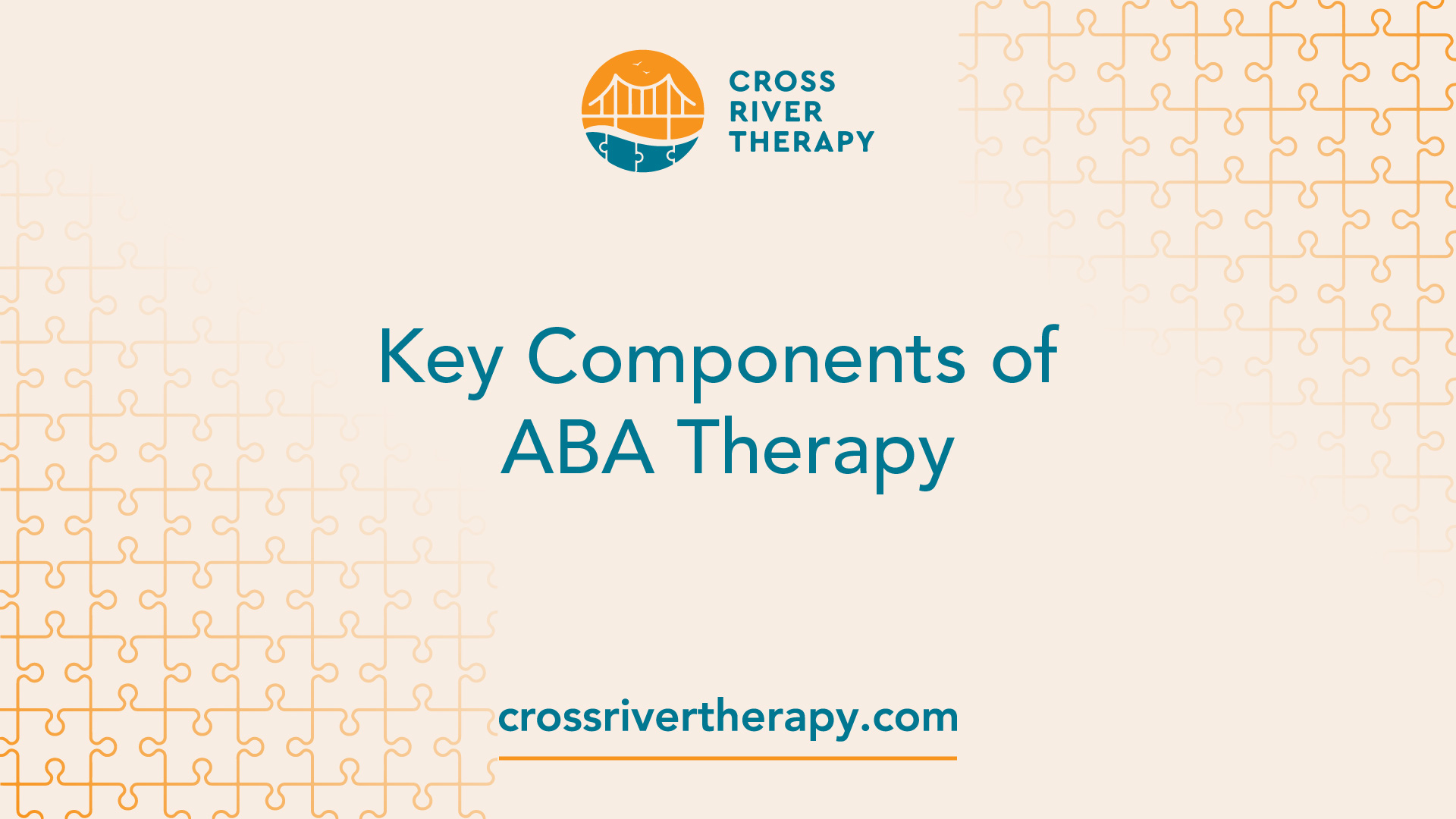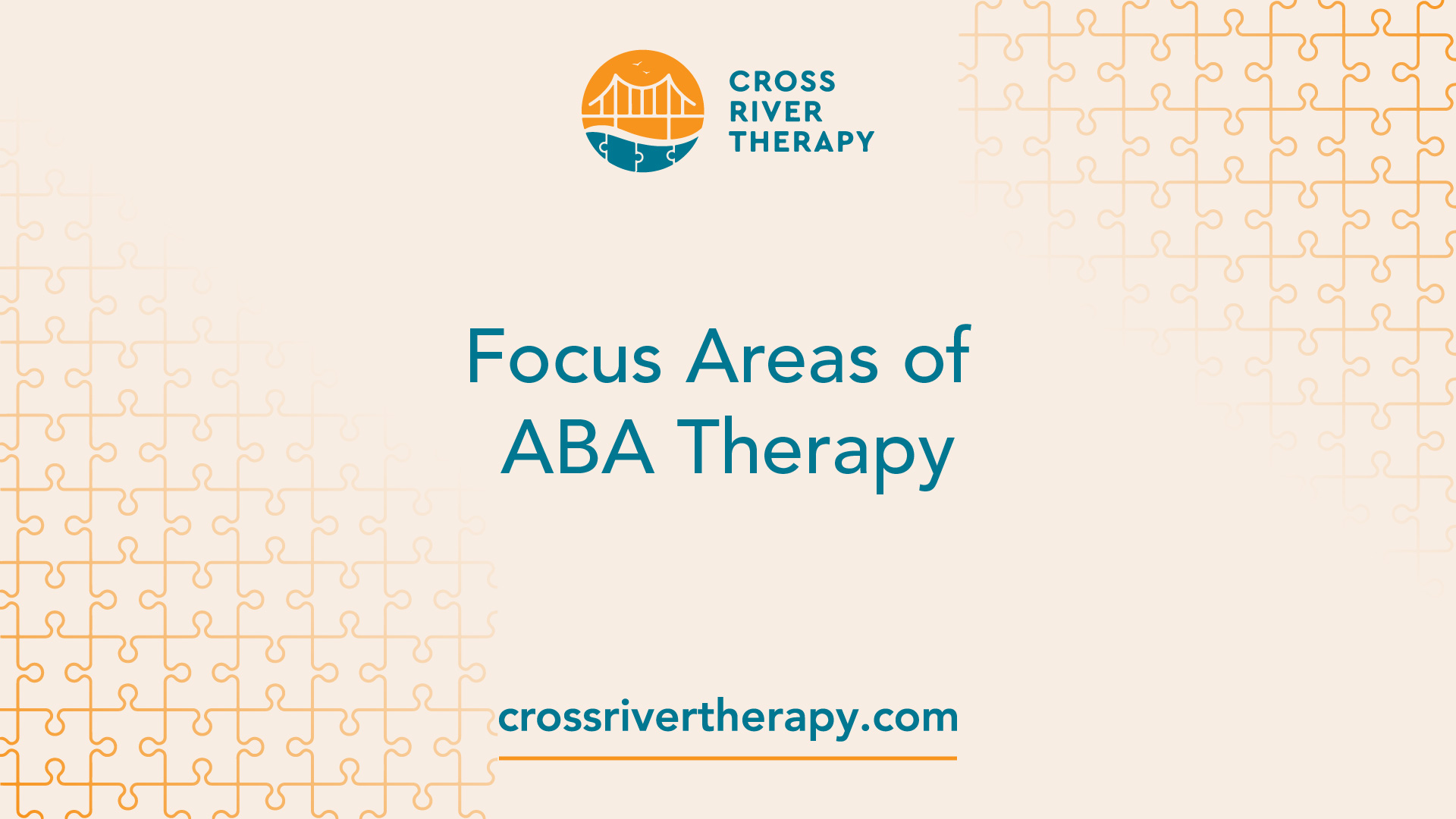Functional Assessments Enhanced by ABA Therapy
Discover how ABA therapy and functional assessments can empower your child's growth and development!
Understanding ABA Therapy
Fundamentals of ABA Therapy
ABA Therapy, or Applied Behavior Analysis Therapy, is a scientifically proven method designed to enhance various skills in individuals diagnosed with autism spectrum disorder (ASD) and other developmental disorders. This treatment approach focuses on modifying behavior through systematic interventions.

The ultimate goal is to improve communication, social skills, and daily living skills among individuals, creating a pathway toward a more independent life.
One key principle of ABA therapy is the use of data collection and analysis to monitor progress. By tracking the effectiveness of various interventions, therapists can make adjustments to ensure the best outcomes for their clients. This structured approach has made ABA therapy widely recognized as an effective treatment option for those with ASD.
- Evidence-Based: ABA therapy relies on rigorous scientific research to shape its methodologies.
- Individualized: Each treatment plan is tailored to the specific needs of the individual.
- Goal-Oriented: Treatment focuses on measurable and achievable goals.
- Progress Monitoring: Ongoing assessment helps refine therapy strategies.
Individualized Treatment Goals
Setting individualized treatment goals is essential in ABA therapy. These goals are based on thorough assessments of the individual’s strengths, challenges, and specific areas of need.
The aims may encompass a variety of skills, such as improving communication abilities, enhancing social interactions, boosting independence in daily activities, and minimizing challenging behaviors.
Collaborating with a Board Certified Behavior Analyst (BCBA), caregivers play a critical role in defining these goals. The transformation of general skills into specific, measurable targets allows for focused teaching and clearer tracking of progress Blue ABA Therapy.
- Communication Skills: Improve verbal and non-verbal communication abilities.
- Social Skills: Enhance interactions in social settings.
- Daily Living Skills: Promote independence in tasks like dressing or feeding.
- Challenging Behavior Reduction: Decrease disruptions and enhance positive behavior.
By fostering a collaborative environment among caregivers and professionals, ABA therapy can provide tailored support that aligns with the unique needs of each child. For more information on how ABA therapy supports autism interventions, visit our page on ABA therapy and autism interventions.

Key Components of ABA Therapy
In ABA therapy, several foundational elements work together to create effective interventions tailored for children with autism. These components include behavior analysis, setting behavioral goals, and monitoring progress.
Behavior Analysis in ABA
Behavior analysis is at the heart of ABA therapy. It involves studying how behaviors are influenced by environmental factors and determining the function of specific behaviors.
The primary purpose of behavioral assessment in ABA is to ascertain the reasons behind a child's actions, understand how different reinforcements play a role, and teach appropriate new behaviors and skills. This information helps ABA professionals establish tailored intervention strategies [1].
Understanding the functions of behaviors—such as whether they are maintained by escape, access to items, automatic reinforcement, or attention—allows therapists to develop targeted interventions and improve the overall effectiveness of the therapy.
Setting Behavioral Goals
Setting clear, measurable goals is crucial in ABA therapy. Research indicates that for children to make meaningful progress, a structured therapeutic plan should be established with defined objectives.
ABA services typically recommend a minimum of 15 hours per week, with some children benefiting from up to 40 hours, depending on their unique needs. The rate of progress varies based on several factors, including weekly therapy hours, existing abilities, the severity of behaviors, and active parental involvement.
Behavioral goals in ABA are often categorized into short-term and long-term objectives, ensuring a structured approach to improvement. Setting these goals not only gives children clear targets to aim for but also helps parents and therapists track progress over time.
Short-Term Goals: Achievable within a few weeks.
- Example: Using a 'please' prompt 3 times a day.
Long-Term Goals: Aimed for over several months.
- Example: Independently initiating conversation with peers.
Monitoring Progress in Therapy
Monitoring progress is a vital aspect of ABA therapy, achieved through consistent data collection and analysis. This enables therapists to assess the effectiveness of the interventions being applied and to make necessary adjustments to therapy goals as needed.
Regular evaluation not only helps in identifying successful strategies but also signals when certain approaches may require modification.
Functional Behavior Assessments (FBAs) play a crucial role in this monitoring process. They provide insights into the antecedents and consequences of behaviors, guiding therapists in tailoring their approaches to meet specific needs.
Research shows that FBAs involving functional analysis yield more significant effects compared to those that rely solely on indirect assessments.
Monitoring ensures a dynamic, responsive therapy approach, ultimately enhancing the child's development. It reinforces the relationship between ABA therapy and functional assessments, giving families the best tools for success in their children's learning journey.

Focus Areas of ABA Therapy
ABA therapy encompasses several focus areas tailored to meet the unique needs of children diagnosed with autism. These areas include communication skills development, social interaction enhancement, and challenging behavior management.
Communication Skills Development
One of the primary focus areas of ABA therapy is the development of communication skills. ABA therapists work closely with individuals to assess their current communication abilities and create personalized goals aimed at improving speech, language, and social communication skills. Goals in this area emphasize enhancing an individual's ability to express themselves and effectively understand others.
Sample Communication Goals:
- Expressive Skills: Use of words to request items.
- Receptive Skills: Understanding simple instructions.
- Social Communication: Engaging in conversations with peers.
Progress in these communication goals is tracked through various assessment tools and regular observations.
Social Interaction Enhancement
Another essential aspect of ABA therapy is fostering appropriate social interactions. Social skills goals aim to cultivate social communication, awareness, and the ability to build connections with others. By targeting these skills, children learn the nuances of interaction, which are crucial for forming and maintaining relationships.
Sample Social Skills Goals:
- Awareness: Recognizing social cues.
- Interaction: Initiating and maintaining conversations.
- Collaboration: Participating in group activities.
These elements are integral in helping children navigate social situations with more confidence.
Challenging Behavior Management
Managing challenging behaviors is a core component of ABA therapy. Behavioral goals in this domain focus on decreasing unwanted behaviors while increasing desired behaviors. This includes improving compliance with tasks, following routines, and effectively managing frustrations.
Sample Behavioral Goals:
- Compliance: Following instructions promptly.
- Routine Following: Adhering to daily schedules.
- Frustration Management: Utilizing coping strategies to handle stress.
Functional Behavior Assessments (FBAs) play a crucial role in identifying the underlying causes of challenging behaviors. FBAs help in developing targeted strategies that promote positive behavior changes and enhance the overall quality of life for individuals in ABA therapy [5].
The integration of these focus areas in ABA therapy ensures that children receive a comprehensive approach tailored to their unique strengths and challenges, aiming for the best outcomes in communication, social interactions, and behavior management.
Role of ABA Therapists
In the realm of ABA therapy, the role of therapists is vital for the success of treatment programs, especially for children diagnosed with autism. They work collaboratively with families to create a supportive and effective learning environment.
ABA Therapist Responsibilities
ABA therapists hold various responsibilities that are crucial to the implementation of effective therapy. They are tasked with designing and overseeing individualized treatment plans that cater to the specific needs of each child.
A qualified behavior analyst, such as a Board Certified Behavior Analyst (BCBA), customizes these plans based on ongoing assessments, taking into account the child’s skills, needs, preferences, and family circumstances.
Key responsibilities of ABA therapists include:
- Designing Treatment Plans: Creating tailored interventions based on individual assessments.
- Implementing Strategies: Using specific behavioral techniques to encourage positive behaviors.
- Monitoring Progress: Regularly assessing the effectiveness of strategies and making necessary adjustments.
- Training Caregivers: Educating family members on strategies that can be implemented at home.
Collaboration with Caregivers
An integral part of ABA therapy is the collaboration between therapists and caregivers. Communication between these parties enhances the consistency of the therapy, making it more effective. Therapists often provide guidance to parents on how to reinforce learned behaviors in everyday situations.
The benefits of this collaboration include:
- Enhanced Consistency: Parents can apply strategies learned in therapy to home settings, reinforcing skills.
- Emotional Support: Caregivers receive support and reassurance during the therapy process.
- Customization of Techniques: Therapists can adjust strategies based on caregiver feedback and observations at home.
- Improved Outcomes: Active engagement from caregivers can lead to better results in a child’s development.
By fostering a strong partnership, ABA therapists and caregivers work together to promote the child’s growth. This relationship not only strengthens the effectiveness of interventions but also empowers families as they navigate the unique challenges of autism.
Importance of Functional Assessments
Functional assessments are an essential aspect of ABA therapy, helping caregivers and therapists understand a child's behavior in context. This understanding can facilitate more effective intervention strategies, ultimately leading to better outcomes for children with autism.
Functional Behavior Assessments (FBAs)
Functional Behavior Assessments (FBAs) are vital in ABA evaluations. They provide in-depth insights into the functions of behaviors, enabling the development of effective intervention plans. FBAs allow professionals to identify the underlying reasons for challenging behaviors commonly exhibited by individuals with autism. By analyzing individual behavior traits, caregivers can tailor support strategies to enhance positive behaviors while minimizing negativity.
Types of Functional Assessments
Several types of functional assessments can be utilized to identify behavior challenges:
- Indirect Functional Assessments: These gather information based on observations from those familiar with the child, like teachers and caregivers. They assess behavior challenges and potential causes.
- Observational (Direct) Functional Assessments: Therapists observe the child directly in their natural environment to identify the antecedents, behaviors, and consequences (ABCs) that occur.
Combining indirect and observational assessments offers a comprehensive view of a child's behavior and context.
Conducting Functional Assessments
Conducting a Functional Behavior Assessment requires a systematic approach:
- Defining Behavior: Clearly describe the behaviors of concern.
- Collecting Data: Gather information through observations or reports from caregivers and teachers.
- Forming a Hypothesis: Propose potential functions for the behavior based on the collected data.
- Testing the Hypothesis: Implement strategies and observe if changes occur.
- Developing an Intervention Plan: Create a plan based on the confirmed function of the behavior [8].
This structured process ensures that caregivers and therapists have a solid foundation for understanding the reasons behind behavior, leading to more effective techniques for support. For further insights into how these assessments tie into ABA therapy, check our articles on ABA therapy and behavioral assessment and ABA therapy and autism interventions.
Implementing Functional Analysis
Understanding and implementing functional analysis is an essential part of ABA therapy for individuals with autism. This process helps clarify why certain behaviors occur and guides the development of effective interventions.
Understanding Behavioral Functions
Behavior often serves specific functions for the individual. In ABA therapy, identifying these functions is crucial for effective intervention. The primary functions of behavior include:
- Attention: Gaining attention from others, whether positive or negative.
- Escape: Avoiding or escaping from tasks or situations.
- Access: Securing access to tangibles or activities.
- Sensory: Fulfilling sensory needs or seeking stimulation.
By determining the function of a behavior, therapists can tailor strategies that address the underlying causes rather than just the symptoms.
Functional Analysis Process
The functional analysis process involves several key steps. It typically begins with data collection through direct observation and interviews to identify behavior patterns. Next, a hypothesis about the function of the behavior is developed. This hypothesis is then tested by manipulating antecedents and consequences within a controlled setting.
The goal is to understand which conditions lead to the highest frequency of the target behavior, ultimately allowing therapists to design effective intervention plans based on their findings. Parents and caregivers play a vital role in this process to ensure a comprehensive and individualized approach.
Research on Functional Assessments
Research consistently supports the effectiveness of functional assessments in improving outcomes for individuals with autism. Multiple studies demonstrate that intensive and long-term therapy utilizing ABA principles can yield significant improvements in areas like communication, social skills, and daily living skills [5].
One foundational study in functional analysis, conducted by Iwata et al. in 1994, developed an analogue functional analysis that lasts for 15 minutes. This type of analysis has seen various modifications in research, making it more practical for use in different settings.
These findings highlight the significant benefits of employing functional assessments in ABA therapy, further enhancing understanding and intervention for children diagnosed with autism. For further insights on effective behavior change techniques, explore the connections between aba therapy and behavior modification.
References
[1]: https://www.brighterstridesaba.com/blog/aba-behavioral-assessment
[2]: https://blueabatherapy.com/aba/aba-therapy-goals/
[3]: https://www.adinaaba.com/post/aba-therapy-goals
[4]: https://thinkpsych.com/blogs/posts/what-is-functional-analysis-fa
[5]: https://www.magnetaba.com/blog/aba-therapy-and-functional-behavior-assessments
[6]: https://www.autismspeaks.org/applied-behavior-analysis



